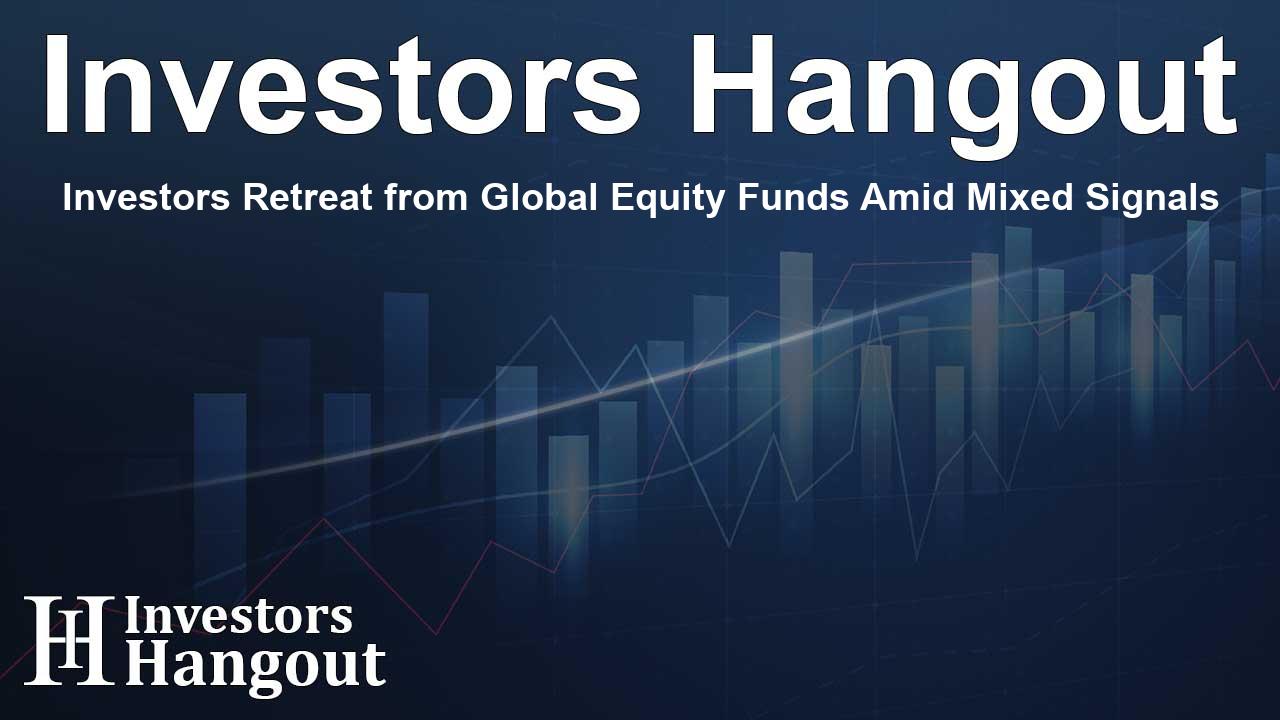Investors Retreat from Global Equity Funds Amid Mixed Signals

Global Equity Funds Experience Outflows Amid Economic Uncertainty
Global investors have shown a noticeable shift in sentiment, becoming net sellers of equity funds for the second consecutive week recently. This trend reflects rising concerns over the stability of the U.S. economy, coupled with a cautious approach toward the political landscape as the U.S. Presidential debate approaches.
Understanding the Context of Investment Trends
Despite the recorded outflows, there remains a glimmer of optimism regarding central banks hinting at potential interest rate cuts. This factor has somewhat mitigated the extent of the outflows. In the week leading up to September 11, investors withdrew a sum of $3.46 billion from global equity funds. This figure shows a decrease in withdrawal volume compared to the previous week, where net sales amounted to $4.96 billion.
Impact of U.S. Economic Signals
Recent U.S. economic data indicating a slowdown catalyzed last week's sell-off in global equities. However, this week has seen some recovery, with world stocks rebounding over 2%, thanks in part to an interest rate cut by the ECB and expectations of a potential 50-basis point rate cut in the next U.S. Federal Reserve meeting.
Sector Performance and Investor Behavior
Within the U.S. equity market, investors pulled out $7.82 billion last week. This follows a hefty $11.54 billion in net sales the week prior. Interestingly, Asian and European equity funds attracted inflows of $2.91 billion and $793 million, respectively, highlighting a regional divergence in investor confidence and strategy.
Expert Insights on Investment Choices
Ajay Rajadhyaksha, chairman of global research at Barclays, expressed a favorable view of global equities relative to fixed income investments, citing the global trend toward rate cuts and low joblessness as contributing factors. However, he cautioned that many investors may prefer to remain on the sidelines until greater clarity emerges leading up to the U.S. presidential election.
Sector Specific Trends in Outflows and Inflows
The technology sector observed significant pressure, recording a massive $1.97 billion outflow in the aftermath of changing economic forecasts, marking the highest outflow since November of the previous year. In contrast, the consumer staples and utilities sectors saw net inflows of $1.12 billion and $878 million, indicating a shift toward more defensive investment strategies.
Growing Interest in Safe-Haven Assets
Moreover, during the same week, investors significantly favored safer financial instruments. They added approximately $21.67 billion to money market funds and $4.14 billion to government bonds. This trend indicates a growing preference for security over potentially riskier equity investments in light of current uncertainties.
Bond Fund Stability
In a robust display of resilience, global bond funds experienced their 38th consecutive week of inflows, attracting $11.81 billion. Notable allocations included $3.12 billion into short-term bond funds and $1.5 billion into high-yield bonds, suggesting that investors are keen on incorporating bonds into their portfolios to mitigate risks.
The Appeal of Precious Metals and Energy Investments
Additionally, gold and other precious metal funds have maintained their allure, registering net purchases of $472 million for five weeks running. Energy funds also saw a minor increase in inflows, amounting to $150 million, as these assets continue to appeal to investors seeking value and potential upside amidst fluctuating markets.
Emerging Market Dynamics
When examining emerging markets, data suggests that equity funds faced outflows totaling $1.05 billion for the 14th consecutive week. Conversely, bond funds in these markets managed to attract $567 million, marking a consistent inflow trend for the past 12 weeks, highlighting the differing sentiments towards equity and fixed income in developing regions.
Frequently Asked Questions
What are the recent trends in global equity funds?
Global equity funds have seen outflows for two consecutive weeks due to economic concerns and political uncertainty.
Which sectors are seeing the most investment activity?
The technology sector has experienced significant outflows, while consumer staples and utilities are attracting inflows.
What is influencing investor behavior currently?
Factors include U.S. economic signals, upcoming presidential elections, and central banks' rate cut prospects.
How have bond funds performed amidst this climate?
Bond funds have shown resilience with continuous inflows, reflecting a preference for safer investments.
Are precious metals still a viable investment choice?
Yes, gold and precious metal funds have retained strong appeal, showcasing consistent net purchases.
About Investors Hangout
Investors Hangout is a leading online stock forum for financial discussion and learning, offering a wide range of free tools and resources. It draws in traders of all levels, who exchange market knowledge, investigate trading tactics, and keep an eye on industry developments in real time. Featuring financial articles, stock message boards, quotes, charts, company profiles, and live news updates. Through cooperative learning and a wealth of informational resources, it helps users from novices creating their first portfolios to experts honing their techniques. Join Investors Hangout today: https://investorshangout.com/
Disclaimer: The content of this article is solely for general informational purposes only; it does not represent legal, financial, or investment advice. Investors Hangout does not offer financial advice; the author is not a licensed financial advisor. Consult a qualified advisor before making any financial or investment decisions based on this article. The author's interpretation of publicly available data shapes the opinions presented here; as a result, they should not be taken as advice to purchase, sell, or hold any securities mentioned or any other investments. The author does not guarantee the accuracy, completeness, or timeliness of any material, providing it "as is." Information and market conditions may change; past performance is not indicative of future outcomes. If any of the material offered here is inaccurate, please contact us for corrections.